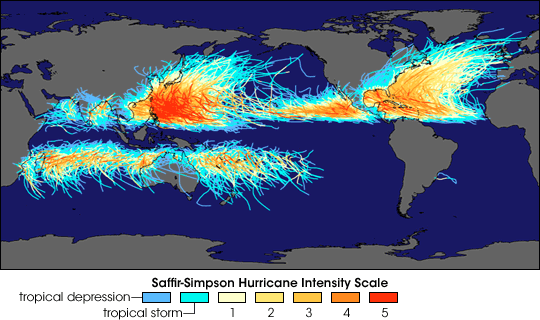The country has been hit by extreme weather yet again.
For two weeks, extreme cold swept over the eastern United States, from Minnesota with temperatures of 30 below zero, all the way down to Florida, where “frozen iguanas” were falling out of trees. This long cold snap culminated in a “bomb cyclone,” a winter storm that moved up the east coast, hitting Georgia with freezing rain and South Carolina with half a foot of snow before dumping several feet of snow on New England.
Some people (including, of course, Donald Trump) may say that “global warming” can’t be real if such cold weather reaches the American South. In fact, these extreme weather events, even the ones bringing unusually cold weather, can indeed be attributed to human-caused climate change.
Climatologists explain that while no single weather event can be attributed to climate change, the increase in the frequency of extreme weather events can be. And we’ve seen a very rapid increase in that frequency. Over the course of the last 30 years, the average number of “billion-dollar weather events” in the U.S. had been 5.5 per year. For the past five years, the average jumped up to 10.5. Last year? Fifteen! These events took place all over the country, from drought in the northern Plains states, to raging wildfires in California, to several extremely powerful hurricanes in the Caribbean and the Gulf of Mexico.
There are not only more extreme events, but the events themselves are more extreme. Higher average temperatures mean greater moisture in the air, which translates into heavier rain. Higher temperatures also mean higher sea levels and higher storm surges and more flooding. These changes in temperature and moisture also have an effect on the Jet Stream, making these air currents less stable and more “wobbly” – meaning that cold air can more easily spill down from the Arctic, while warmer air moves north and takes its place. And sure enough, while the Southeast has had record cold temperatures, Alaska has been experiencing record warm weather.
These changes in the Jet Stream also mean that weather patterns can “stall” in one place for longer – contributing to record rainfall and flooding when Hurricane Harvey stalled over Houston, for example, and unbroken drought and more extreme fires in the West.
While the earth’s climate has changed in the past, getting both warmer and colder than it is now, those changes used to happen over much longer periods of time – thousands or even tens of thousands of years. But today’s changes, brought on by increased carbon dioxide in the atmosphere, have been squeezed into just over 100 years. That’s far more quickly than human societies are used to reacting – especially a society based on the production of profit above all else.
Changes that rapid demand rapid response and reorganization from a society – both to reverse the problem and to deal with the consequences of those changes. And there ARE things that can be done, right now, to decrease the amount of carbon dioxide in the atmosphere and start repairing the damage. But this capitalist system, and the people who run it, are not about to jeopardize the profit of their top corporations by completely rearranging how energy is produced, how transportation flows, where people live, how food is produced. It is not even going to rebuild homes and cities to be able to withstand these more extreme events that carry more risk to the general population. If profit will not be made, these corporations, and the governments that represent them, are completely uninterested.
And ordinary working people, with no other options and nowhere else to go, will be the ones to suffer disproportionally. Just ask the working class people of Houston, of Puerto Rico, of the fire-swept areas of California – and the frozen cities of South Carolina.
Capitalism is completely unequipped to deal with the climate change that it has brought about. If humanity is to survive – if life as we know it is to continue on this earth – it is up to the working class to sweep capitalism aside.





















































